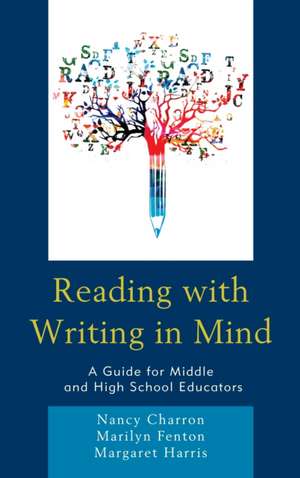Reading with Writing in Mind
Autor Nancy Charronen Limba Engleză Paperback – 17 noi 2017
Preț: 298.67 lei
Nou
Puncte Express: 448
Preț estimativ în valută:
57.15€ • 59.83$ • 47.29£
57.15€ • 59.83$ • 47.29£
Carte disponibilă
Livrare economică 15-29 martie
Livrare express 01-07 martie pentru 25.21 lei
Preluare comenzi: 021 569.72.76
Specificații
ISBN-13: 9781475840056
ISBN-10: 1475840055
Pagini: 158
Dimensiuni: 152 x 229 x 13 mm
Greutate: 0.23 kg
Editura: Rowman & Littlefield
ISBN-10: 1475840055
Pagini: 158
Dimensiuni: 152 x 229 x 13 mm
Greutate: 0.23 kg
Editura: Rowman & Littlefield
Notă biografică
Cuprins
Preface
Introduction
Chapter 1: Reading to Improve Student Writing
Activity 1.1: Take Time to Notice¿Looking and Learning
Activity 1.2: Take Time to Notice¿An Artist¿s Choices
Activity 1.3: Take Time to Notice¿Comparison of Two Works of Art
Activity 1.4: Noticing the Writer¿s Choices¿Reading Poems
Activity 1.5: Noticing the Writer¿s Choices¿Reading Fiction
Activity 1.6: Noticing the Writer¿s Choices¿Reading Nonfiction
Activity 1.7: Determining Connotation vs. Denotation¿Taking the Temperature of Words
Activity 1.8: Identifying Three Kinds of Questions
Activity 1.9: Using the I-Search Paper
Chapter 2: Reading and Writing in the Content Areas
Activity 2.1: Using the SOAPSTone Strategy
Activity 2.2: Role-playing
Activity 2.3: Using Primary Documents
Activity 2.4: Using Letters, Diaries, and Other Primary Sources
Activity 2.5: Applying the Concept of Essential Questions in Content Areas
Activity 2.6: Implementing Socratic Seminars
Activity 2.7: Reviewing the Textbook
Activity 2.8: Journaling
Activity 2.9: Authentic Content Area Writing
Chapter 3: Developing Focus and Logic through the Essay
Activity 3.1: How Meaning is Constructed in E.B. White¿s ¿Once More to the Lake¿
Activity 3.2: Form Supports Meaning
Activity 3.3: Conversion of a Narrative to an Essay
Activity 3.4: Finding Significance in Literature
Activity 3.5: Brainstorming in Response to Essential Questions
Chapter 4: Reading for Persuasive Writing: The Argument
Activity 4.1: Checklist for Close-Reading
Activity 4.2: The Face-Off
Activity 4.3: The Scaffolded Oral Presentation
Activity 4.4: A Panel Discussion
Activity 4.5: Staging the Trial
Activity 4.6: Defending Preference
Chapter 5: Learning to Write by Reading Poetry
Activity 5.1: Less is More
Activity 5.2: ¿Found¿ Poetry
Activity 5.3: From Prose to Poetry
Activity 5.4: Playing with Meter
Activity 5.5: Learning from e.e. cummings
Activity 5.6: Poems Using Metaphor
Activity 5.7: Letter Poem
Activity 5.8: History and Poetry
Activity 5.9: Songs as Poetry
Activity 5:10: Inference
Chapter 6: Providing Literacy Access to All Students
Chapter 7: Reading and Reflecting on One¿s Own Writing
Chapter 8: Closing the Literacy Loop
References
About the Authors
Descriere
This book demonstrates effective teaching practices that facilitate all students' written language development and improve attitudes toward writing in grades 6 - 12. All teachers need to be involved in raising the literacy bar. This book provides practical and classroom-tested activities and strategies that promote success for all learners.
